Gentlemen’s Guide: Bangkok’s 5 Best Barber Shops
These top 5 barber shops in Bangkok are where gentlemen can elevate ...
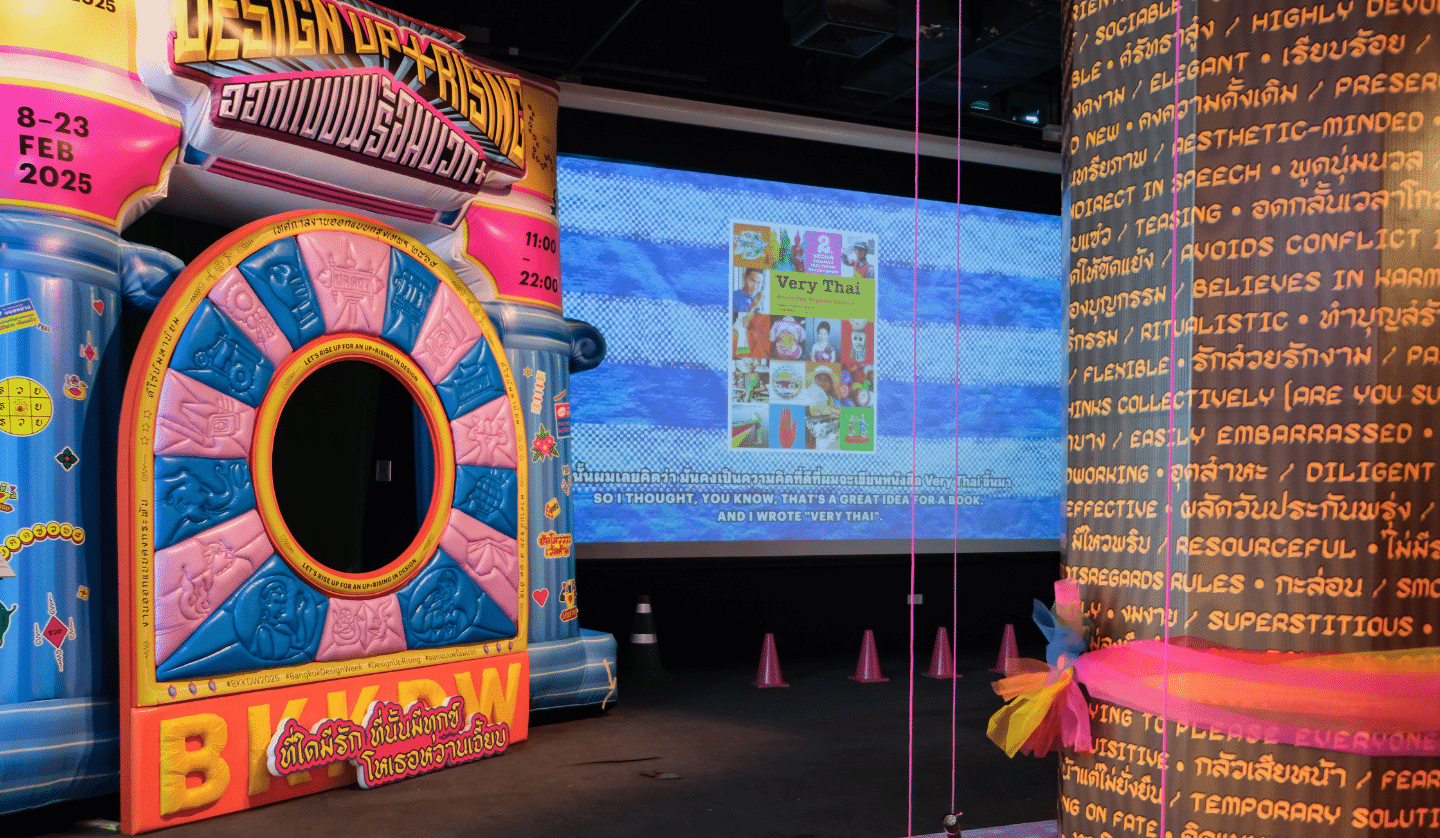
VERY THAI: In this regular column, author Philip Cornwel-Smith explores popular culture and topics related to his best-selling books Very Thai and Very Bangkok. This column, he explores the street culture theme of Bangkok Design Week 2025.
The street pop theme of this year’s Bangkok Design Week 2025 (BDW2025) makes me feel both nostalgic and energised. It also brings TCDC full-circle to its founding. Back in 2005, I worked on a research project with Thailand Creative & Design Centre for a year straddling its opening. In the wake of my book, Very Thai: Everyday Popular Culture, the brief to me (with Chuck Sutyla and Adrian Von Ulrich of the museum consultancy Lord Cultural Resources) was to identify design values in Thai popular culture.
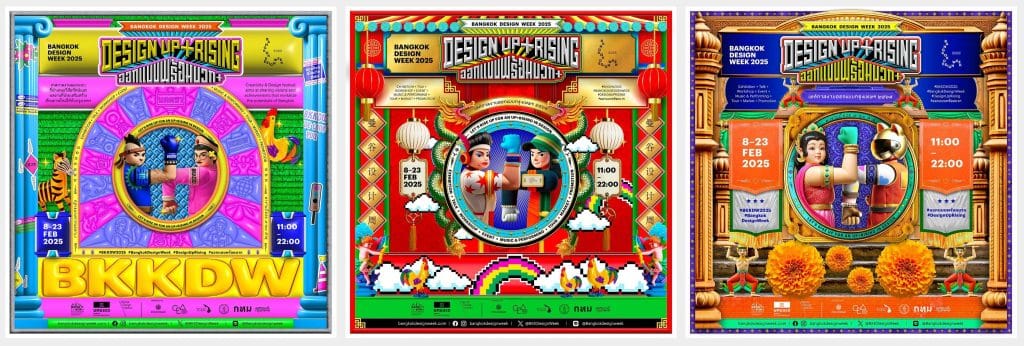
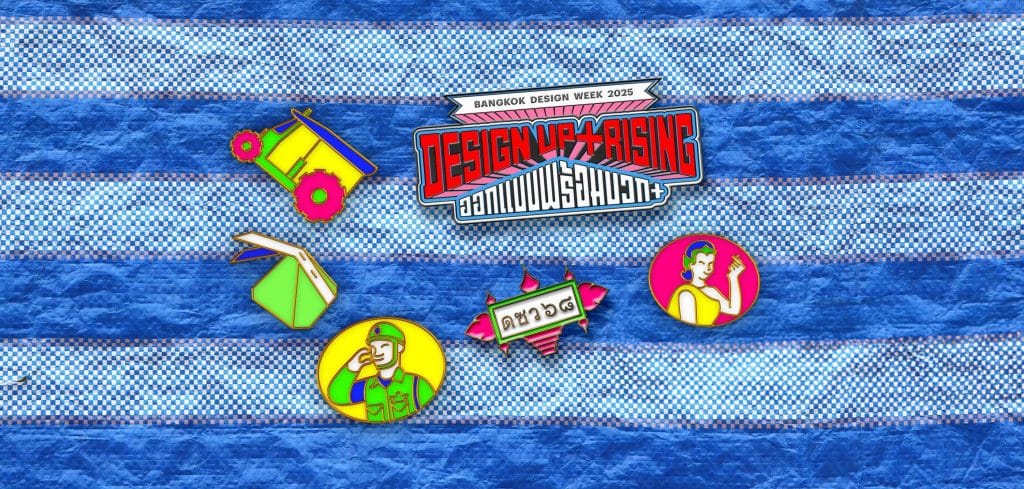
It was early days in that genre. Some of the findings surfaced in exhibitions over the years, starting with TCC’s opening show, ‘Isan Retrospective.’ Back then, only a few designers were starting to source Thai street phenomena in styling objects, films, advertising and events.
Leading that trend has been Saran Yen Panya. He was awarded the 2024 Silpathorn Prize for his experimentation with Thai pop and crafts to make his quirky designs. Recent showcases include his bamboo fan Christmas tree at King Power, rattan tuk-tuk for Dior’s Gold Building and embroidered noodle stools in his own Citizen Tea Canteen.
Two decades later, everyday culture has overtaken traditional motifs as the leading Thai aesthetic, as seen in countless shops, restaurants and products. Kaleidoscopic street style infuses mall interiors, from Siam Center and King Power to EmSphere and Sarapad Thai in OneBangkok.
This vivid pop style saturates the key visual of the BDW2025 theme: ‘Design Up+Rising.’ Created by Siam Attariya and his agency Pink Blue Black and Orange, the collateral is yellow, green, red and other saturated shades of what I call “temple fair colours.” Well-received by Bangkok creatives, it’s a dazzling celebration of everyday popular culture, with matching decor, artefacts and spin-off goods to buy from an altar-like stall.
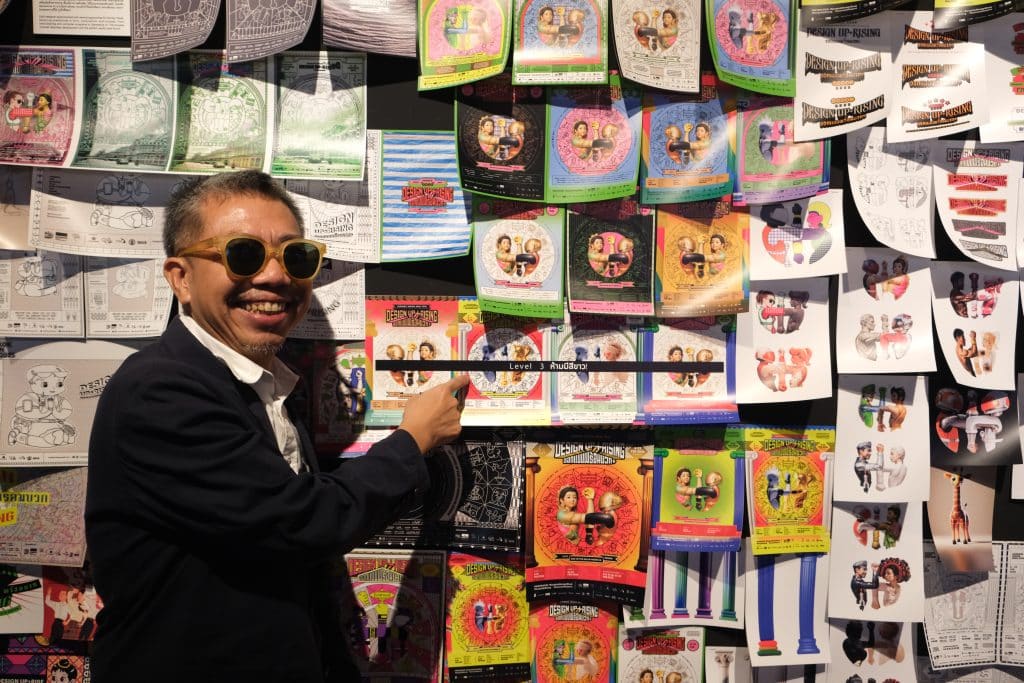
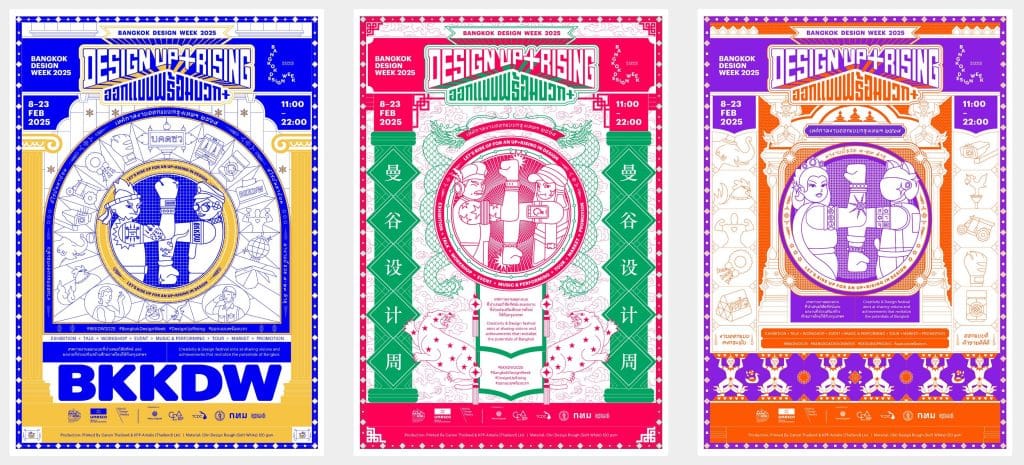
The BDW poster comes in three variants, patterned after a window grille, each reflecting Thai pop hybrids with India, North Asia or the West, They’re dotted with dozens of pop motifs from street signs, police mannequins and nang kwak beckoning ladies to inhalers, CCTV, garlands, sacred goose statues and mascots like Moo Deng or Butter Bear. When TCDC started, faith-related designs – yantra, deity images, offerings – were deemed highly sensitive to exhibit in secular ways. That squeamishness has evaporated, with much of today’s imagery and souvenirs being commodified objects of belief.
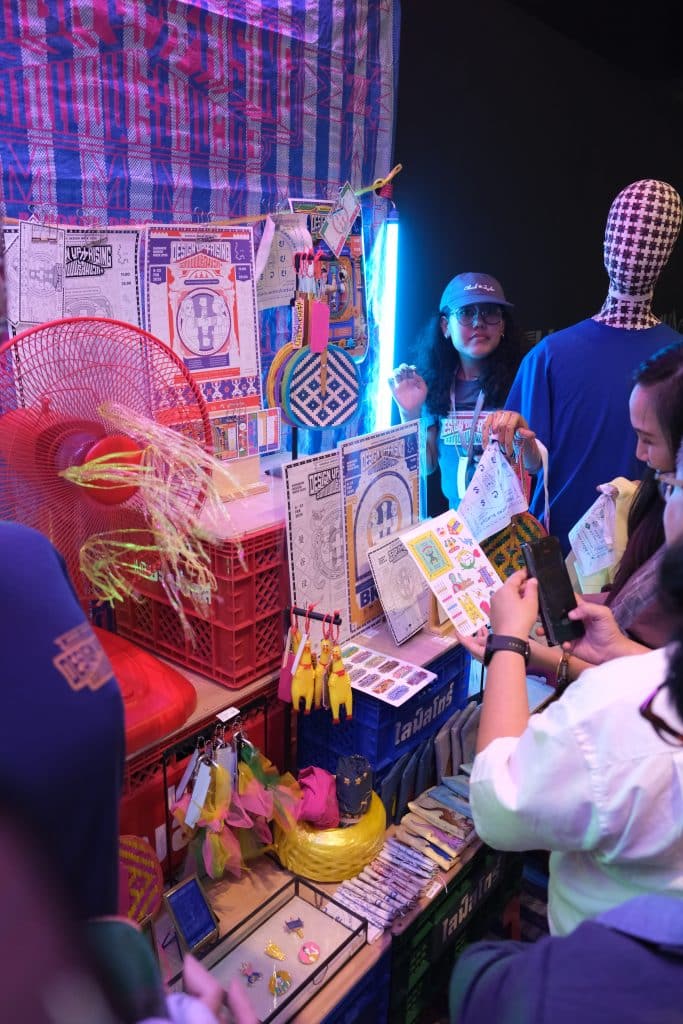
After design weeks got ever more sophisticated, this year’s reverts to the unselfconscious work by ordinary folk and their practical solutions. Installations include things like aluminium furniture, products for street food, or tasting sessions for Thai table condiments.
The overarching Creative Economy Agency also has a mission to mission to educate both the public and practitioners. A meta-exhibition in TCDC explains the creation of the key visual, breaking the design process down into steps like the brief, gathering references, and testing varied drafts, with variations of the posters covering one wall. Ingeniously, stacks of crates support amulet trays holding little photo cards of everyday street details that the public overlooks, which you can magnify using loupes like those found in the amulet trade. In a video about the context, they kindly include Very Thai as the reference and source book that has accompanied this whole phenomenon.
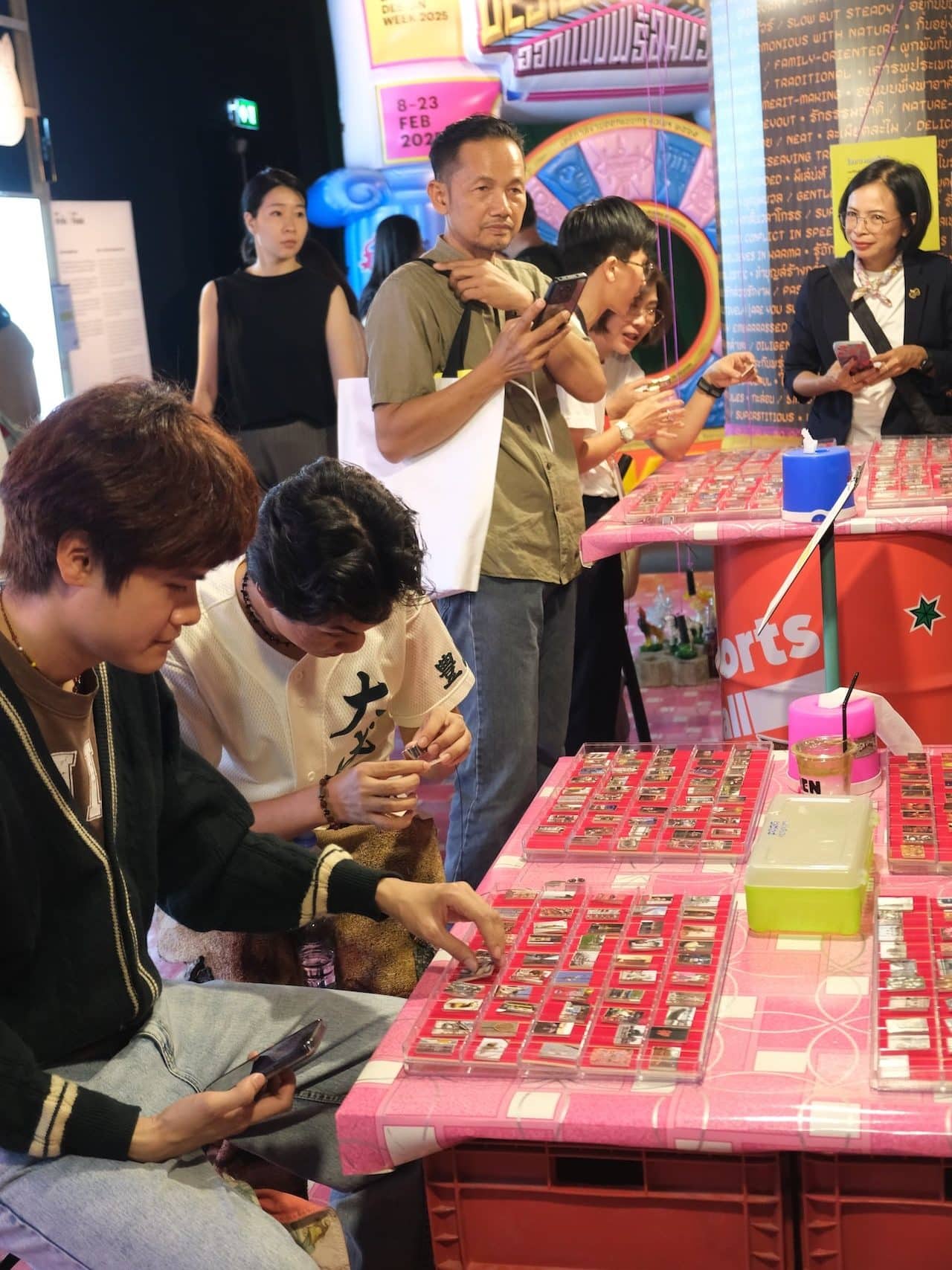
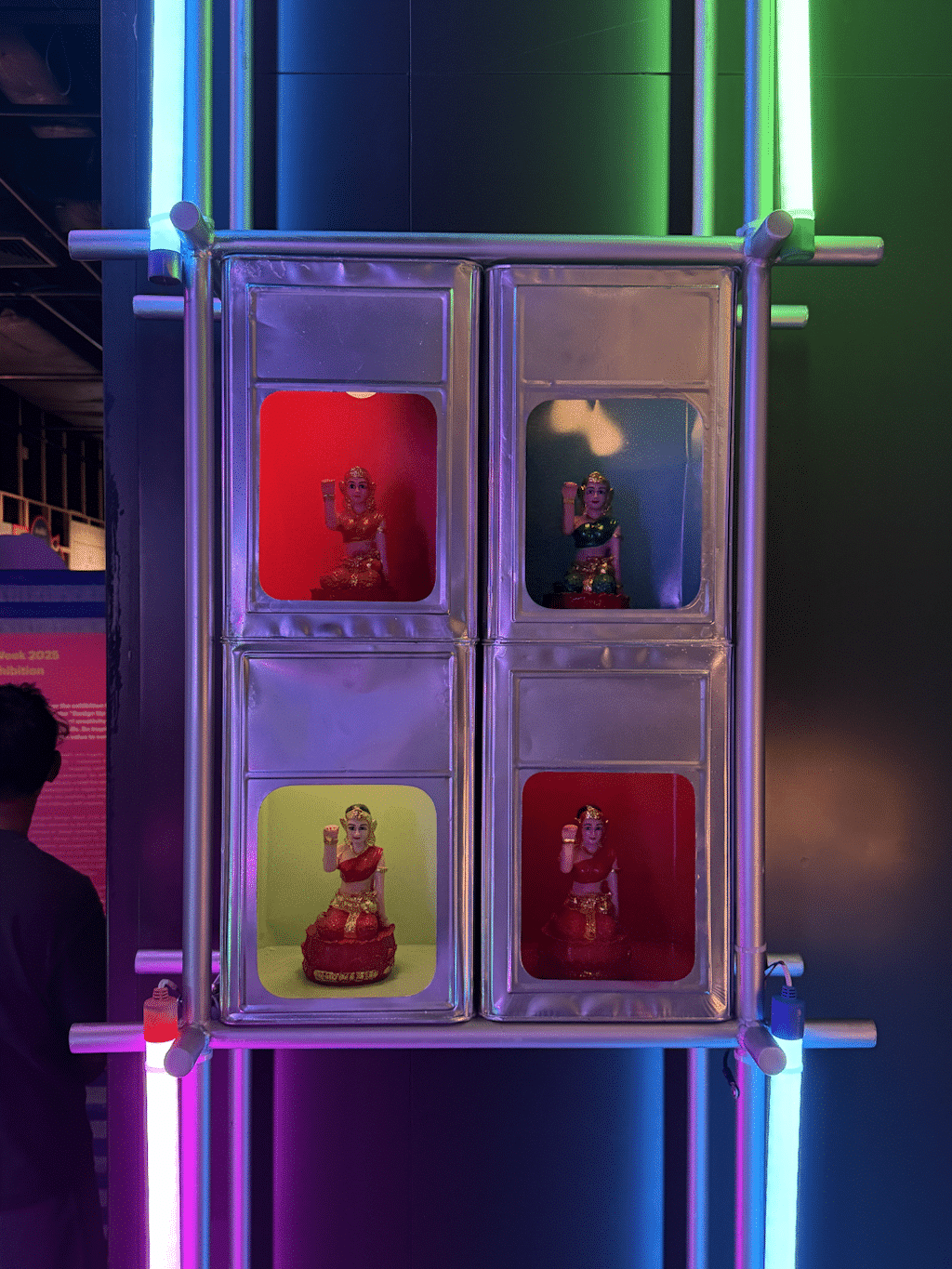
BDW has been extended to two weeks and had its geographical locations condensed from last year’s impossibly scattered 17 districts in 9 days. Across Bangrak and Yaowarat in the first week, then Phra Nakorn and Banglamphu in the second week, professional designers and sponsors’ pavilions show high-concept products, effete corporate showrooms, and earnest community projects. The three weekends add more interactive programs like talks and workshops (such as pairing rice varietals with foods), plus activities in obscure sites that require exploring.
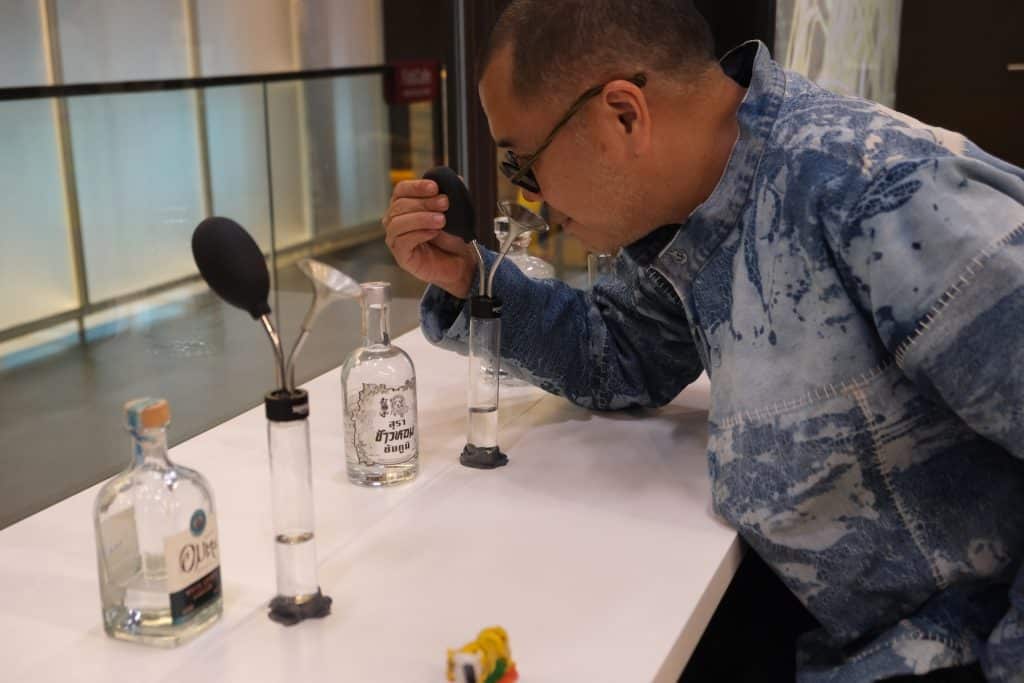
A regular at BDW, Chatchavan Suwansawat of Everyday Architects, has made yet another installation using the humble blue pipe found on every street. He reconfigured pipes into a device that can both stabilise the wheel of a cart on uneven ground while also acting as a ‘grease trap’ to stop oil going down drains.
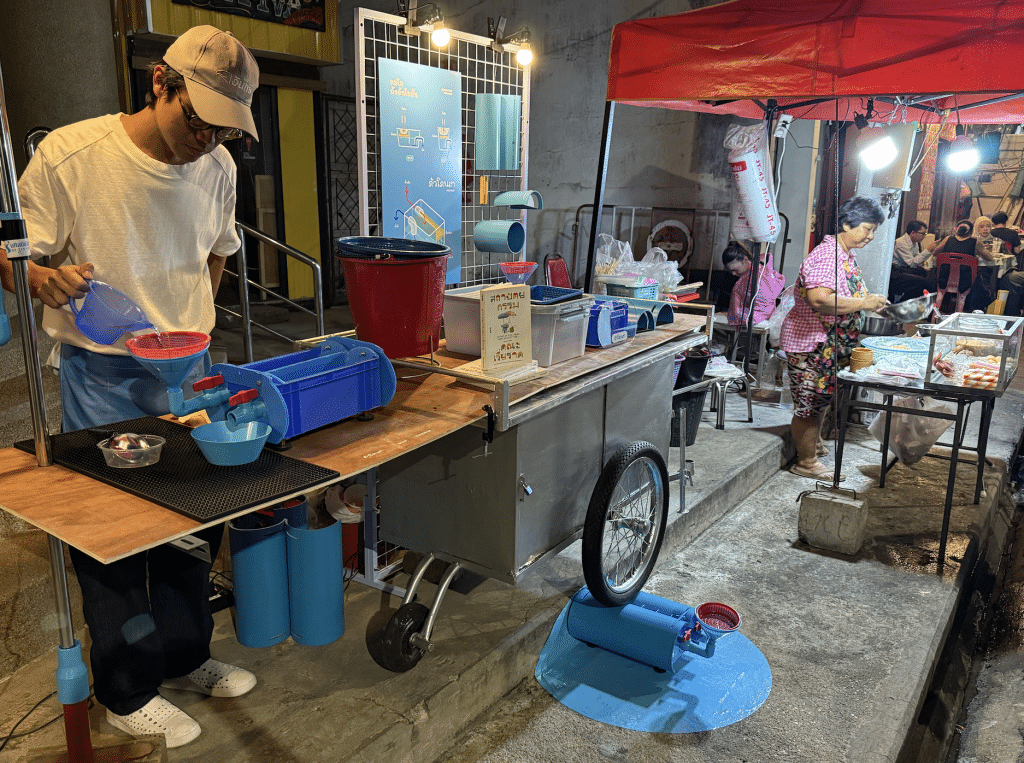
The final weekend of February 23-24 you can still explore the sited dotted through the community flanking Hualumphong Station. Two installations address is now safe area’s past notoriety, like station precincts worldwide, for hoodlums and prostitution. It’s a multi-ethnic locale and one project rethinks how Chinese-Thai families could gather to honour ancestors without burning polluting votive papers.
Beside a playground under an expressway is the most poignant site of all A-Way Home. A giant map links the area’s “urban capillaries” via strings to the home provinces of its resident migrants. A group of young urbanists and the NGO called RTUS have extended a project started by the Goethe-Institut that focuses on seven traders who provide vital roles in the poor local community. We learn about the professional lives of Nares the pork griller, Nit the ice-cream vendor, Wichai the tuk-tuk driver, the launderers Mhai and Mhon, and three other traders.
Such migrant workers had never thought of their humdrum tasks as creativity, but the profiles identify “secret skills you never thought of,” such as styling fruit, community relations management, fabric specialist, GPS brain or product R&D. As the researchers gained their confidence, they felt pride in being respected for their work.
They are visible in the vicinity, with the exhibition right opposite Chamnarn the trash picker. He and his wife operate out of a ramshackle outdoor office amid bales of plastic bottles and bamboo baskets of cans and broken machinery. Saleng carts trundle past with fresh pickings from the area’s bins. His enterprise stands in messy contrast with official efforts to separate and recycle rubbish, which overlook how there is already an effective system operating citywide – below the sniffy noses of class-conscious Bangkokians.
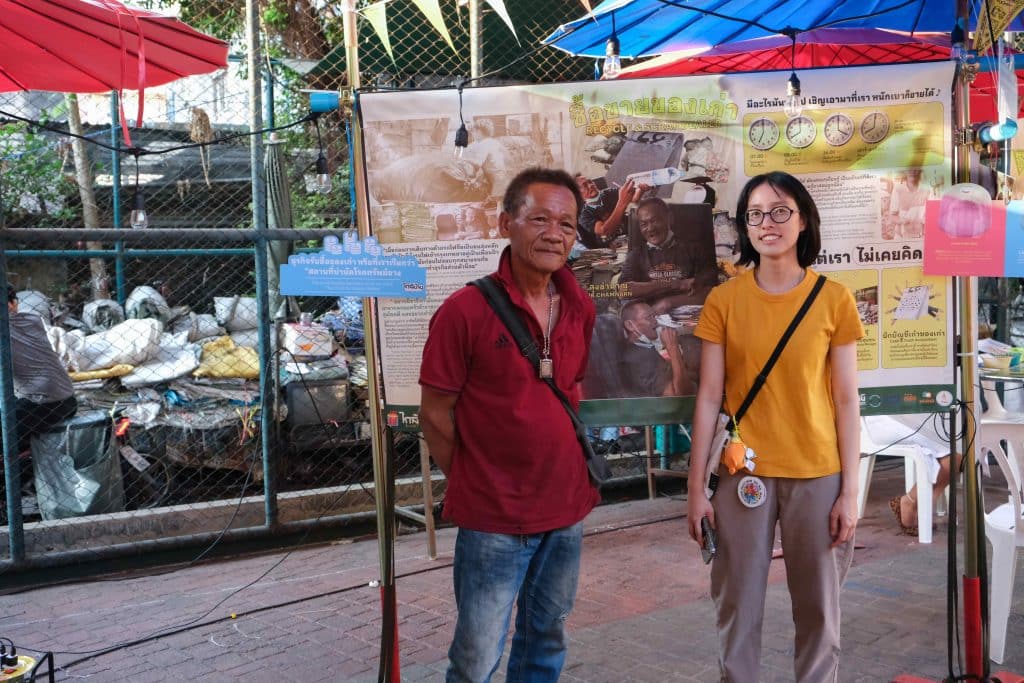
“The system is good – separating by colours like yellow, green, red – but the public is not disciplined,” Chamnarn says with a sigh at how sloppily people contaminate the bins. By contrast, he’s learned just what materials are recyclable and when to send them to the factories given the volatile price of plastics and especially metals (though paper remains stable). “Some days it goes, up, some days down,” he says, chuckling. “It’s like a stock market.”
Over the past two decades, awareness of everyday popular culture has gone from overlooked to self-conscious, from taboo to must-have. Yet this year’s design week reveals how a social gulf remains that leaves the street working public still overlooked, while their objects and accoutrements become pricier “authentic” products. Inadvertently, it’s a kind of gentrification – not of places, but of things.
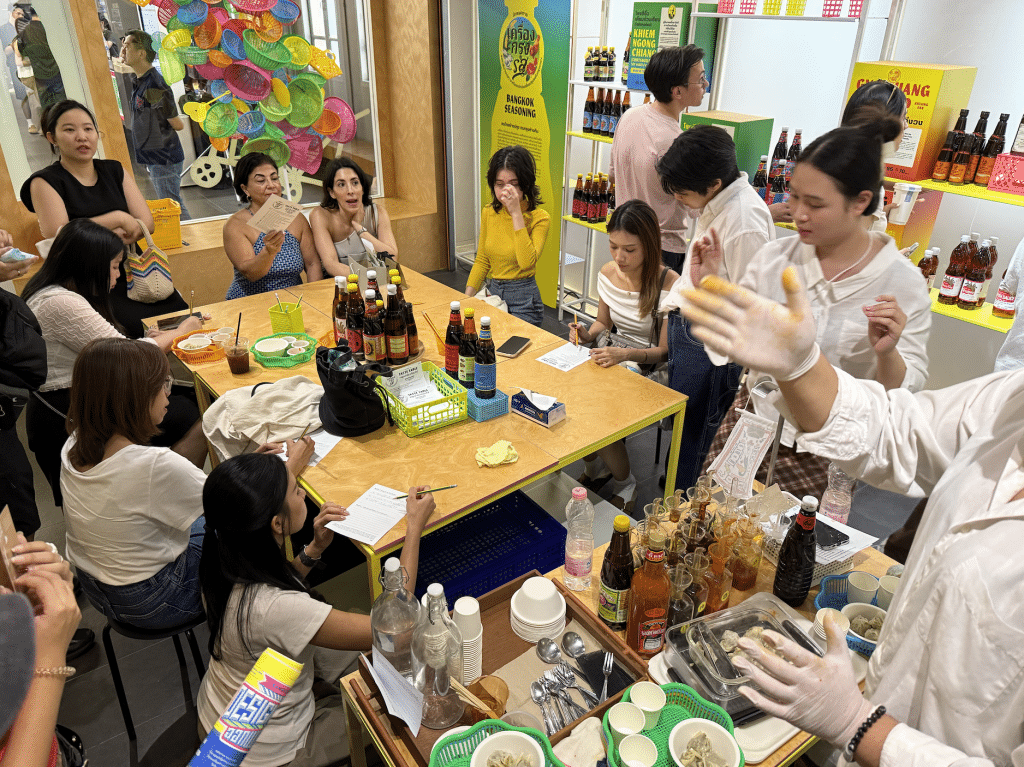
Perhaps it’s unavoidable that value-added design schemes to raise incomes and living standards will turn the mundane into treasure. TCDC’s shop space has been revamped as an ongoing venture, Neighbourmart, which stocks charming everyday goods from the locale. The BDW brochure responsibly includes ‘Guidelines on Respectful and Sustainable Visiting’ for those roving the neighbourhood sois. As the slogan Design Up+Rising attests, design week deserves kudos for recognising the worth of grassroots Bangkokians and presenting their world so colourfully as a culture to cherish.
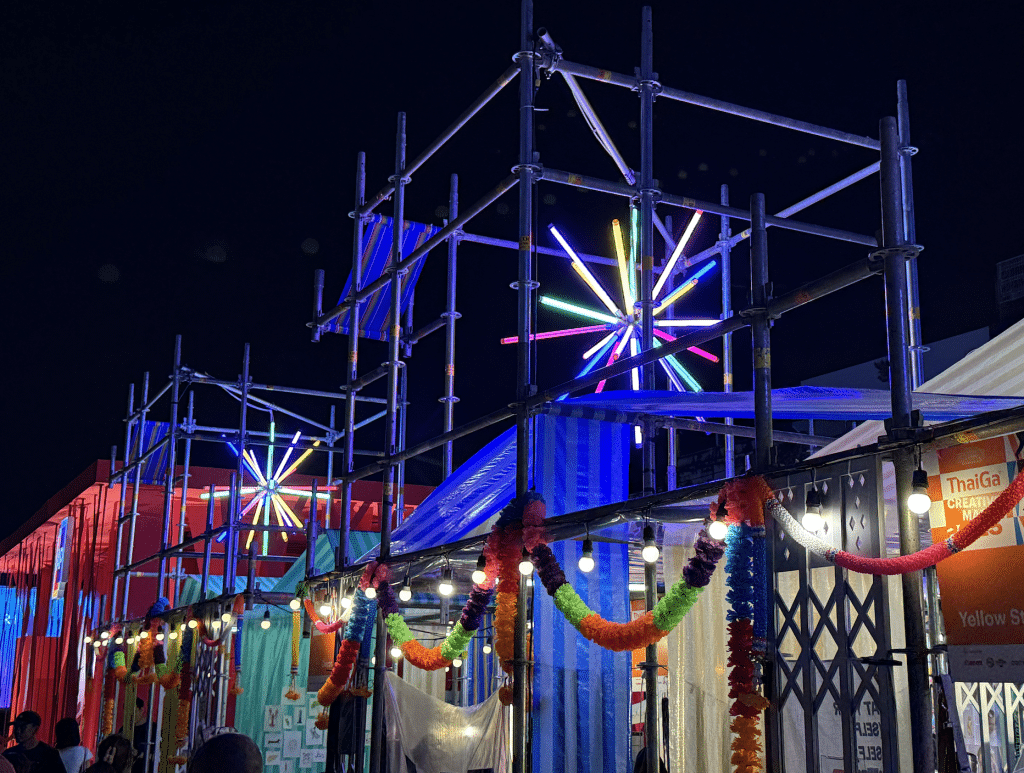
Bangkok Design Week 2025 ends on 23rd February, but the Key Visual exhibition Design Up+Rising will continue until 30th March.
This twice-monthly column, Very Thai, is syndicated by River Books, publisher of Philip Cornwel-Smith’s bestselling books Very Thai: Everyday Popular Culture and Very Bangkok: In the City of the Senses, which has just been relaunched in a fully revised 2nd edition with an extra chapter.
The views expressed by the author of this column are his own and do not necessarily reflect the views of Koktail magazine.
These top 5 barber shops in Bangkok are where gentlemen can elevate ...
In a cinematic landscape saturated with remakes, reboots and sequels, you might ...
While traditional TV shows are serving us endless boy-meets-girl tales. Thailand has ...
Must-have gadgets for kids in the Y2K are, predictably, making a comeback ...
Stay ahead of the curve with these three must-visit new restaurants in ...
See how Kim Steppé’s early passions, family values and entrepreneurial spirit continue ...
Wee use cookies to deliver your best experience on our website. By using our website, you consent to our cookies in accordance with our cookies policy and privacy policy